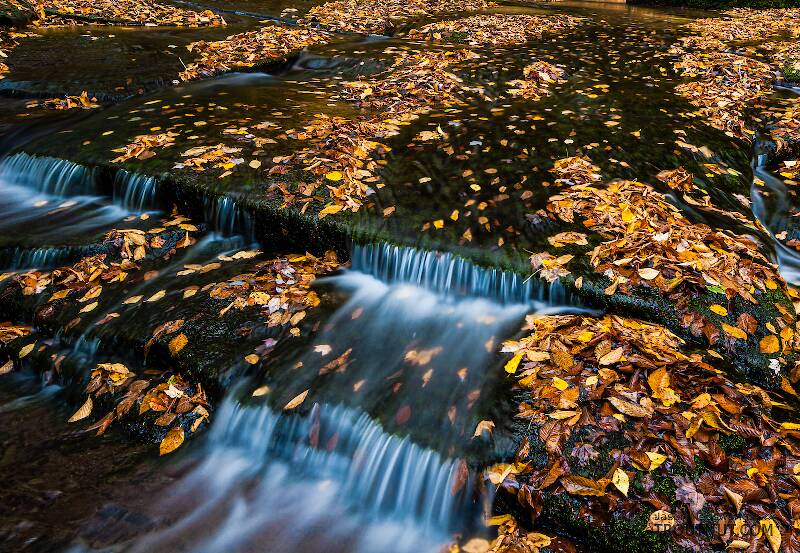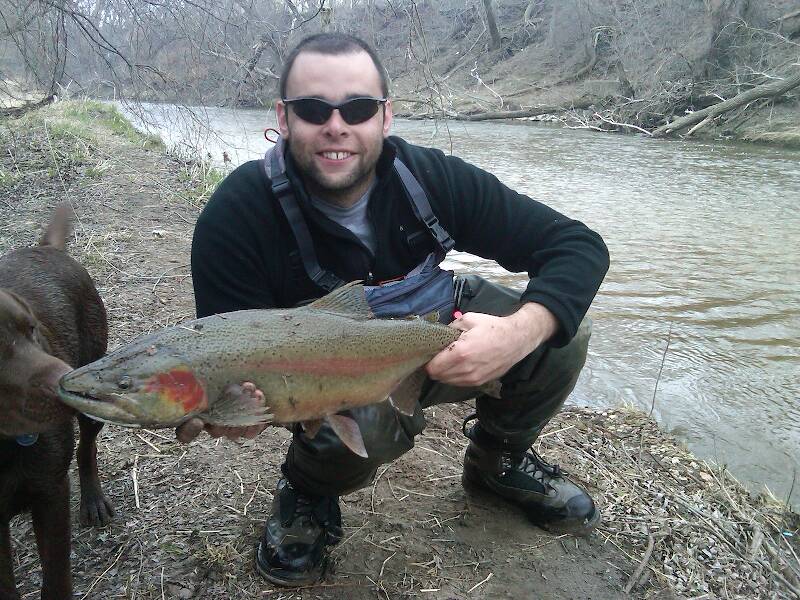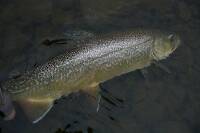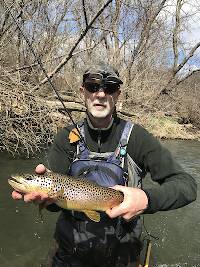
Hex Mayflies
Hexagenia limbata
The famous nocturnal Hex hatch of the Midwest (and a few other lucky locations) stirs to the surface mythically large brown trout that only touch streamers for the rest of the year.
Featured on the forum

I was not fishing, but happened to be at an unrelated social event on a hill above this tiny creek (which I never even saw) when this stonefly flew by me. I assume it came from there. Some key characteristics are tricky to follow, but process of elimination ultimately led me to Sweltsa borealis. It is reassuringly similar to this specimen posted by Bob Newell years ago. It is also so strikingly similar to this nymph from the same river system that I'm comfortable identifying that nymph from this adult. I was especially pleased with the closeup photo of four mites parasitizing this one.

Troutnut is a project started in 2003 by salmonid ecologist Jason "Troutnut" Neuswanger to help anglers and
fly tyers unabashedly embrace the entomological side of the sport. Learn more about Troutnut or
support the project for an enhanced experience here.
WiScott
Posts: 1
Posts: 1
WiScott on Aug 29, 2016August 29th, 2016, 2:28 pm EDT
I have never caught a tiger before. I am fairly certain this is a first for me. Clarify please.
TimCat on Aug 29, 2016August 29th, 2016, 4:33 pm EDT
I've read the Tiger is a sterile hybrid trout between a brook and brown trout. They can't mate, kind of like a donkey (a cross between a horse and a mule?). Word is that they are very rare naturally, but some govt. organizations stock them after breeding them in the hatcheries. They are supposedly larger like the browns, but have the voracious appetites of a brook trout. I've never caught one myself, but have only seen pictures and read about them. They are definitely a cool looking fish (like all trout). I'm sure google and/or your Wisconson DNR's site could give you some info on which rivers are stocked with them. Technically any river with browns and brookies could hold them.
"If I'm not going to catch anything, then I 'd rather not catch anything on flies" - Bob Lawless
Jmd123 on Aug 29, 2016August 29th, 2016, 7:16 pm EDT
Do a search on here, there were a few stories posted on tiger trout not too long ago, and there was quite a discussion about them.
Jonathon
Jonathon
No matter how big the one you just caught is, there's always a bigger one out there somewhere...
Kschaefer3 on Sep 1, 2016September 1st, 2016, 11:08 am EDT
Nowhere in the Driftless, that I'm aware of, stocks tigers. They occur naturally however, and have seemed to be quite abundant this year.
Wbranch on Sep 6, 2016September 6th, 2016, 4:44 pm EDT
Kyle wrote;
Yes, it is true that they do occur naturally however I've been told by NYS biologists that natural reproduction is very rare. Maybe the brown and brook trout in the Driftless waters are just more predisposed to cross traditional same species breeding and take a step over to the wild side.
They occur naturally however, and have seemed to be quite abundant this year.
Yes, it is true that they do occur naturally however I've been told by NYS biologists that natural reproduction is very rare. Maybe the brown and brook trout in the Driftless waters are just more predisposed to cross traditional same species breeding and take a step over to the wild side.
Catskill fly fisher for fifty-five years.
TimCat on Sep 6, 2016September 6th, 2016, 7:35 pm EDT
The wiki site for tiger trout says that they are bred in captivity by using brook trout milt with brown trout eggs, which leads me to assume this is how it happens in the wild most often (if not the only possibility). Apparently the driftless area brook trout populations are rising. This along with the smaller streams in the driftless, and the fact that brookies generally live in the headwaters areas, makes me think that maybe there is more brook trout milt floating downstream on the occasional brown trout egg, with a higher chance because of the confined waters/increased brookie numbers (?).
Either way, it must be pretty cool to catch a wild tiger trout.
Either way, it must be pretty cool to catch a wild tiger trout.
"If I'm not going to catch anything, then I 'd rather not catch anything on flies" - Bob Lawless
Wbranch on Sep 6, 2016September 6th, 2016, 10:48 pm EDT
TimCat wrote;
That is an interesting hypothesis. I wonder though how long the brook trout milt remains viable as it is diluted in the water as it flows downstream. I would think it would need to locate a brown trout egg quite quickly.
In sixty-one years of trout fishing I have only caught four tiger trout. One in NJ when I was a kid and snuck up a feeder stream to the Musconetcong River that came out of the trout hatchery. The little stream was just full of hatchery escapees. My buddy and I caught over a 100 trout in a couple of hours on worms and one of them was a 15" tiger. I caught two other 10" tigers a few years ago on the Little Juniata right near the bridge near Alexandria. My biggest was a tiger of 17.38" that I caught on a streamer in the WB of the Delaware and is the only one that may have been wild.
makes me think that maybe there is more brook trout milt floating downstream on the occasional brown trout egg
That is an interesting hypothesis. I wonder though how long the brook trout milt remains viable as it is diluted in the water as it flows downstream. I would think it would need to locate a brown trout egg quite quickly.
In sixty-one years of trout fishing I have only caught four tiger trout. One in NJ when I was a kid and snuck up a feeder stream to the Musconetcong River that came out of the trout hatchery. The little stream was just full of hatchery escapees. My buddy and I caught over a 100 trout in a couple of hours on worms and one of them was a 15" tiger. I caught two other 10" tigers a few years ago on the Little Juniata right near the bridge near Alexandria. My biggest was a tiger of 17.38" that I caught on a streamer in the WB of the Delaware and is the only one that may have been wild.
Catskill fly fisher for fifty-five years.
Quick Reply
Related Discussions
Topic
Replies
Last Reply
7
Jun 25, 2019
by Wbranch
by Wbranch







